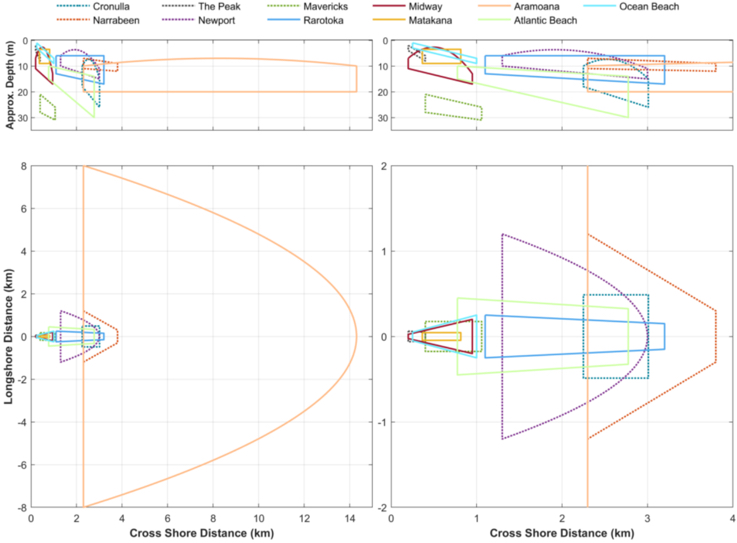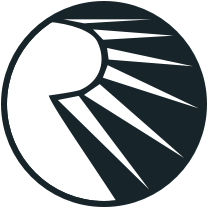
Machine Learning, Slugs and Artificial Reefs: An Exclusive Interview with Dr. Shaw Mead
Dr. Shaw Mead talks sand slugs, the thought leadership of New Zealand surf scientists, beach protection, scanning technology, Mavericks, Lowers and other fascinating topics in this exclusive interview.
Dr. Shaw Mead is one of the most respected researchers in surf sciences with over 20 years of experience consulting on coastal oceanography and marine ecology. We spoke to Dr. Mead between sessions at the Global Wave Conference 2020 on the Gold Coast.
Peter: Hi Shaw, thanks for taking time out of the Conference. The agenda looks amazing.
Shaw: Yeah, there are talks on a wide range of topics and a bunch of great speakers.
No doubt, I wish I was there. I plan on watching the recordings when I can find time. Let’s dive into your recent article in the Journal of Coastal Research on Offshore Wave Conditioning. I found it fascinating and I’m hoping you can tell us all about it. Lets start with the authors: Who did you collaborate with on the article?
Ed Atkin is my business partner and Director at eCoast, our consultancy. He’s working on his PhD in surf break management. David Phillips is an associate professor at Unitec. He has his PhD in coastal processes and surf research.
So you and Ed have worked together for a while. How did you connect with Dr. Phillips?
We started working together studying a slug of sand that showed up at Raglan in 2004 and moved down the point. Slugs like this can benefit beaches with uniform profiles, but they wreak havoc on points. They pull energy from one area and add it to another through the process of offshore wave focussing. That was the case with slug at Raglan, which was about 1 million cubic meters. At low tide the waves were small at Outsides (the main point) while Indies was 2x the sizes of the point and breaking wide.
The slug lasted for about 18 months. And as the slug made its way down the beach, it did not do so as a distinct bar like we expected. Instead it ended up deposited on the beaches sporadically.
I’ve been following some of your work since just before that time, but I’ve never heard that story. You and some of your colleagues from New Zealand have been studying wave formation, bathymetry and surf breaks for a while. Why does it seem like all the best research on these topics comes from New Zealand?
Partly because of Kerry Black, Terry Hume and the NIWA, which is like [America’s] NOAA, and a University of Waikato joint initiative. Their coastal oceanographic branch is next to the University of Waikato and they started a center of excellence focused on these topics. Back in 1995, I was in their first group of students. I worked on the artificial reef program (ARP), trying to create new waves. My thesis was focused on what makes a high performance surf break so we could incorporate those features into offshore structures and build them into coastal protection.
We also started a company (ASR Ltd) 25 years ago which specialized in the study of surf breaks, coastal processes and protection.
That’s one area where we continue to see opportunities for improvement, especially in the tropical island setting. Soft solutions like beach nourishment are temperate measures, they are designed to fail which does not provide sustainability where sand supply is limited. Hard structures often don’t work either. Quantifying and understanding the coastal processes for a particular site is the fundamental basis for the development of successful and sustainable beach management strategies. Many mistakes have been made by people picking up the shore protection manual and applying it without considerations for how it affects larger beach processes.
You end up protecting land at expense of the beaches.
Wind is also a big cause for sand loss. Tons of sand blown inland thanks to humans removing coastal vegetation. Better protection solutions bring together hard, soft and biological solutions.
In the article on offshore wave conditioning, you study 11 breaks including Mavericks in California. You’ve got some great data on the size, location and depth of each break. How did you get the data?
Most of the data already existed from previous bathymetric surveys that were conducted using various methods such as LiDAR and multibeam, including data we’d collected ourselves.
Wave climate data is publicly available straight off the net going all the way back to 1979.
What is the start of the art for bathymetry scans these days?
LiDAR works best when you have clear waters, like in the tropics. Multi-beam sonar is the best in most other cases. Side-scan sonar is more for understanding the substrate and habitats.
We link our bathymetric survey system to an real time kinematic (RTK) GPS, which means no more worrying about heave, pitch and roll sensors. It’s accurate down to the millimeter and it takes waves out of equation. We just bought a new unit that is an upgrade from our last one and it cost cost about $6000 USD…. there are so many types of equipment that are becoming more and more affordable today.
We’re also using some amazing new machine learning program to help us analyze terabytes of video and photo data. We can count number of waves breaking, number of surfers in the water, wave size, etc.
That sounds fascinating. Will you guys make the data publicly available?
It will probably be part of what will continue to be accumulated on surfbreakresearch.org. eventually, along with our surf break management guidelines.
Looking at the diagram (below) that compares the size.and location of the structures you studied, one thing that jumps out at us is the sheer size of Aramoana, especially compared to the much smaller structure that creates Mavericks. Can you tell us a little more about that structure?

Sure, Aramoana is and ebb tidal delta made of millions of cubic meters of sand. Its got a dredged port entrance channel through the middle.
It is what we call a disruptive structure because it takes a monochromatic wave and disrupts it to create multiple peaks that tend to be more surfable. That’s different than a focusing structure like Mavericks which draws energy from adjacent parts of a wave to create a single peak.
We included Aramoana is the study because we are trying to find the line between focusing and disruptive structures.
Aramoana was threatened by plans for channel deepening for port access and the disposal of dredge material near shore, which led to the accumulation of a great deal of data and modeling, which also assisted in the development of a better understanding of how the break worked and sustainable management by the port.
I’m glad you brought up Mavericks. In your diagram, Mavericks appears to be one of the smallest structures you studied. How does it manage to create such giant peaks?
Mavericks is very well defined, really does focus things incredibly. The offshore channel helps as well.
Many of us here in Southern California surf Lowers. Which of your study sites are most similar to Lowers?
We don’t have the bathymetry on Lowers, but as you know its a rock delta probably shaped like a subtle fan out to sea like a small Aromaoana or Newport.

So, what do you think of the current state of artificial surf reefs? What would you build if you had unlimited resources here in Los Angeles? Something like Palm Beach?
No, I’d build something much bigger [chuckles]. Sand bags like those used at Pratte’s and Boscombe unfor
I’d probably focus on something further offshore for preconditioning in deeper water. You don’t need an artificial reef to break waves on the reef to be effective. You can create reefs in deeper water to create a focusing affect and then let the natural inshore bathymetry take care of the wave breaking. These kind of structures also have positive effects to the local marine ecology; in fact there are a lot of artificial reefs in the US that have been constructed for fisheries enhancement, and it wouldn’t take much in the right location to incorporate focussing.
After the 2011 earthquake in New Zealand, we had 8 million metric tons of material to disponse of. We looked at putting it off shore, where you can relax the design parameters when you are not trying to break waves on the reef. You also don’t have to deal 1/2 meter tolerances like you do in the surf zone. Instead, you can build the structure in deep water and work on focusing. That way you are not trying to take on breaking wave energy day after to day. This was one of the first research projects that Unitech funded and led to the current paper.
Unitec sounds like the patron saint of surf. I also understand you are working with Anthony Marcotti on the World Wave Project.
Yeah thats right. Sculpting [the ocean floor] does have legs. We recently did a study last year looking at a site in Baja, Mexico that was an almost-break. It has some bombies in the way and a poor peel angle. They are building a small resort nearby so we looked into changing the bathymetry to make the wave out front more surfable. We submmitted 4 designs including a 100m wave and 400m wave. The latter would be created by removing up to 50,000 cubic meters of material. Unfortunately the project hasn’t yet moved forward.
Well I hope you find other similar opportunities.
At the end of the day, we’re trying to understand offshore structures and their affect on wave preconditioning and breaking, hoping to find some better ways that waves can be built by humans.
We’re cheering for you all the way. See you at the Surf Park Conference next month, Shaw!


